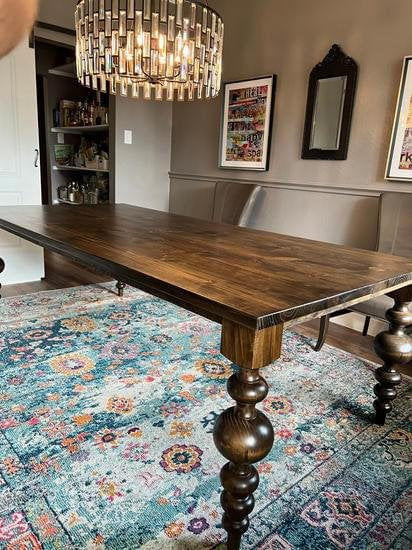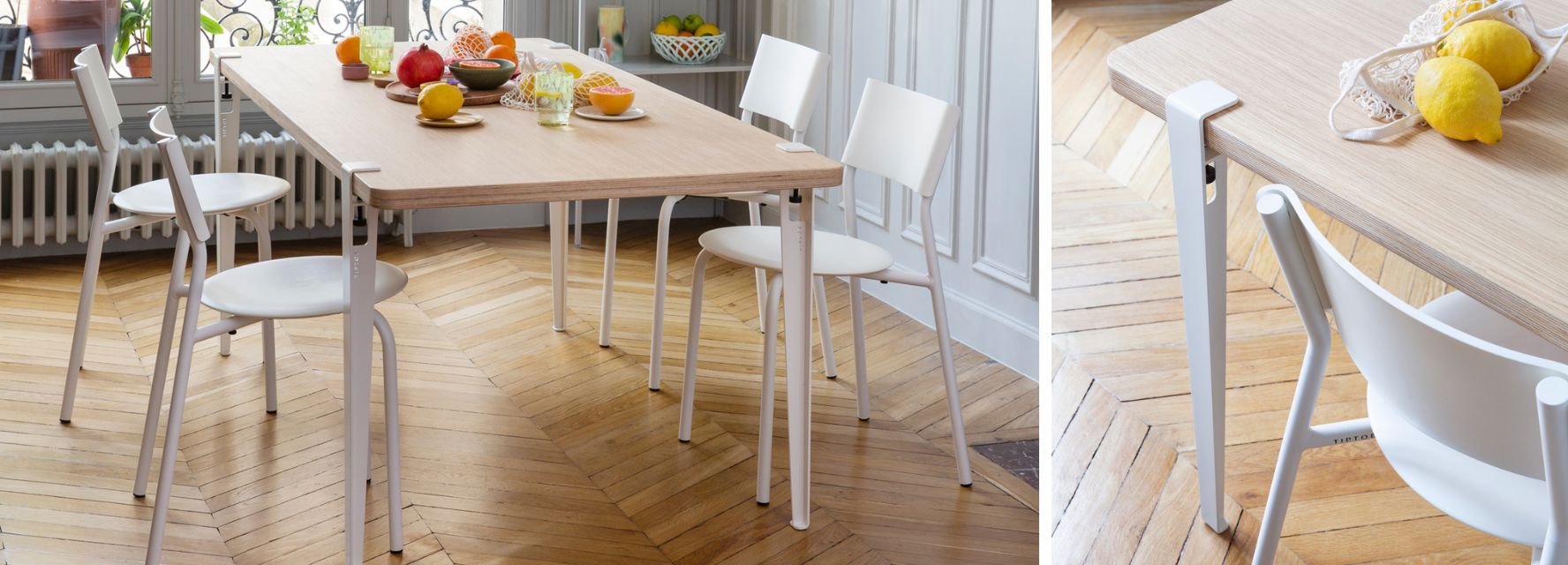Simple Steps to Replacing Old Dining Room Table Legs with New Ones
Simple Steps to Replacing Old Dining Room Table Legs with New Ones
Blog Article
From Typical to Modern: Find the Suitable Dining Area Table Legs for Your Style
The option of dining space table legs plays a critical function in specifying the overall personality of your area, linking the gap in between typical craftsmanship and contemporary aesthetic appeals. While traditional styles such as cabriole and turned legs evoke a sense of ageless refinement, contemporary styles like barrette and geometric options present a possibility for striking aesthetic interest. Assessing the right balance in between these designs requires a nuanced understanding of your existing décor and personal preference. As you take into consideration these aspects, the inquiry continues to be: how can you effortlessly incorporate these diverse leg styles to develop an unified eating experience?
Comprehending Table Leg Styles
The range of dining-room table leg styles can significantly affect both the looks and performance of the area. Each leg design adds special visual components and useful functions, satisfying diverse layout preferences and use demands. Comprehending these designs is essential for selecting the appropriate table that lines up with your total interior decoration vision.
As an example, tapered legs supply a clean, traditional appearance that can enhance a space's sophistication, while pedestal bases provide stability and maximize legroom, making them optimal for smaller spaces. Hairpin legs, a hallmark of mid-century modern-day style, present an industrial panache, permitting a ventilated, open feeling. In a similar way, trestle legs evoke rustic appeal, giving robust assistance and a sense of eternity.
Wood legs can bring warmth and structure, whereas metal options often communicate a streamlined, modern vibe. Inevitably, understanding table leg styles is necessary for creating a natural dining location that mirrors individual style while ensuring usefulness and comfort.
Typical Table Leg Options
When selecting eating area table legs, typical choices commonly personify timeless sophistication and craftsmanship. These designs reflect a rich heritage and a commitment to top quality, making them optimal for those who appreciate classic aesthetics.
Among the most iconic conventional leg designs is the cabriole leg, defined by its elegant bent form. This layout frequently features ornamental makings and is most typically discovered in Queen Anne and Chippendale furniture. One more popular choice is the transformed leg, which boasts a collection of smooth, rounded forms that offer a timeless appearance while maintaining stability.
Moreover, the straight leg, while straightforward, supplies a durable and basic framework that can blend flawlessly with a variety of tabletop styles. For those attracted to ornate detailing, claw-and-ball feet legs evoke a sense of magnificence and can act as a spectacular focal factor in any kind of eating space.
Lastly, stand bases, although not purely legs, offer a different conventional alternative that permits enough legroom and can be magnificently carved. Each of these traditional leg styles adds to the overall setting of an eating area, weding function with visual charm.

Modern Table Leg Designs
Modern table leg layouts supply a varied variety of designs that emphasize cutting-edge products and clean lines. These designs often focus on performance while acting as striking focal points within a dining space. Minimal appearances prevail, with legs crafted from materials such as steel, glass, and engineered wood, which add to a ventilated and contemporary feeling.
One prominent layout is the barrette leg, characterized by its slender, tapered framework that offers stability without frustrating the tabletop (dining room table legs). This design is typically located in mid-century contemporary furnishings and can easily match different dining table forms. An additional trend is using geometric shapes, where legs may handle angular or unbalanced forms, adding visual passion and a touch of artistry

Mixing Styles for Unique Areas
Frequently, house owners seek to create unique eating spaces that mirror their personal style by blending different layout go to the website elements. This technique permits for the consolidation of diverse appearances, leading to a harmonious yet distinct atmosphere. Combining a rustic wood table with sleek, modern metal legs can produce an eye-catching contrast that boosts the room's general charm.
In addition, incorporating vintage table legs with modern tabletops can evoke a sense of background my latest blog post while maintaining a modern-day sensibility. Such combinations not just showcase private preference however additionally encourage creativity, enabling homeowners to curate a room that really feels both personal and inviting.
Shade plays an essential function in this mixing procedure; choosing table legs that match or comparison with the existing shade plan can enhance visual interest. Whitewashed legs can soften the daring of a dark table surface, producing a balanced aesthetic.
Tips for Picking the Right Legs
Selecting the right table legs is essential for accomplishing both capability and visual allure in your eating area. Begin by thinking about the general style of your area. Standard setups take advantage of legs that feature intricate makings or turned designs, while contemporary spaces may ask for sleek, minimalist styles.
Next, evaluate the elevation and stability of the legs. dining room table legs. Common eating tables range in between 28 to 30 inches in height, so ensure the legs enhance this dimension for convenience. In addition, durable materials, such as hardwood or steel, can enhance security and long life
Review the leg form as well-- alternatives include right, tapered, or pedestal layouts. Straight legs provide a classic look, while tapered legs can include a touch of beauty. Pedestal bases more info here give sufficient legroom and are perfect for smaller areas.
Verdict
In summary, picking the suitable eating area table legs calls for careful factor to consider of both modern and standard designs. By integrating leg style, elevation, and product with the total décor, a natural and inviting ambience can be accomplished.
The range of dining room table leg styles can dramatically affect both the aesthetics and functionality of the area. Ultimately, comprehending table leg styles is vital for creating a natural eating area that reflects individual style while making certain functionality and comfort.One of the most legendary traditional leg styles is the cabriole leg, identified by its stylish curved shape. Straight legs supply a classic appearance, while conical legs can include a touch of beauty.In summary, choosing the perfect eating area table legs needs cautious consideration of both modern-day and conventional designs.
Report this page